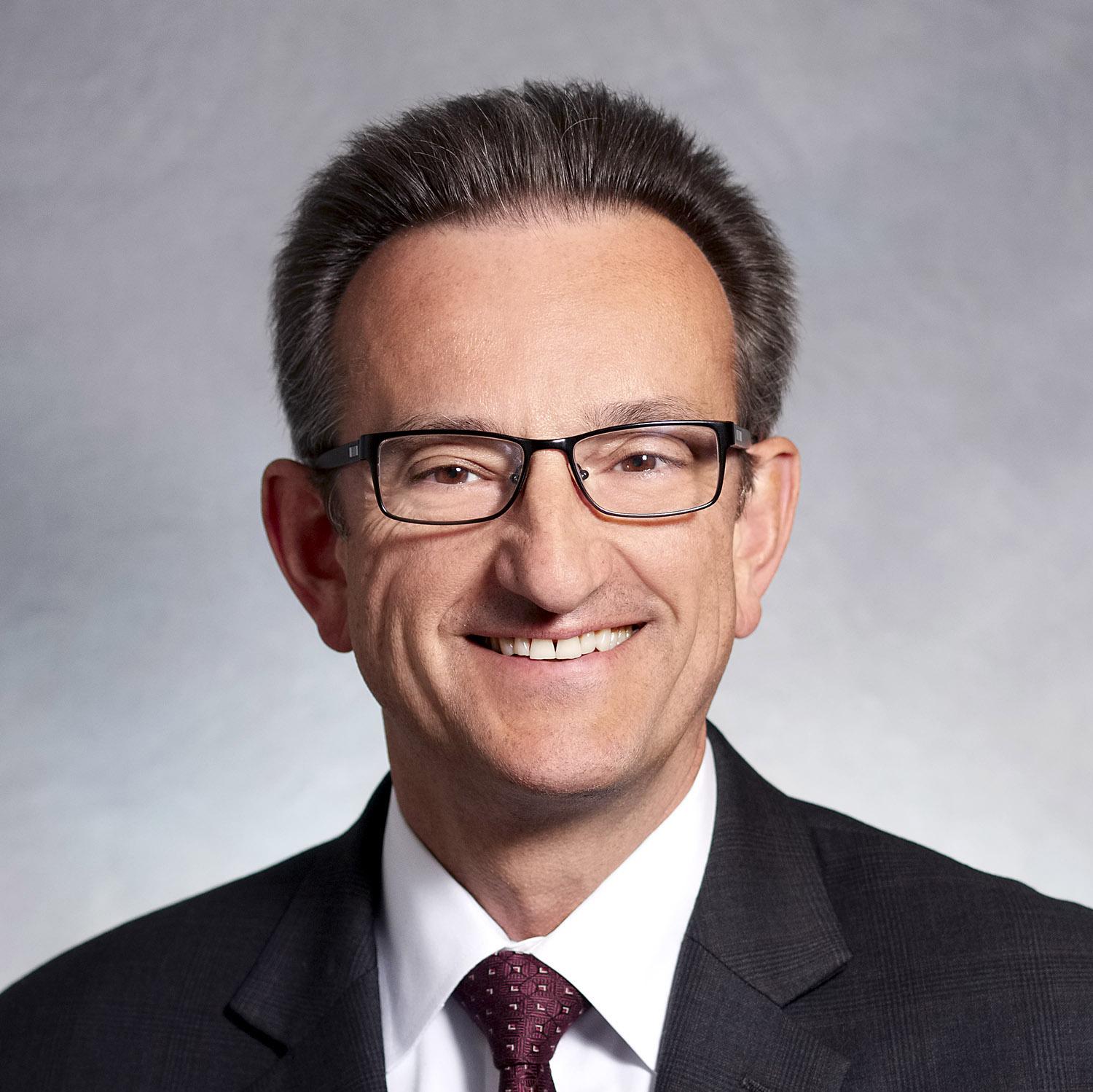
COVID-19: The Biden Presidency and What Lies Ahead
-
bookmark
-
print

- Keywords:
- covid-19 vaccine


With Joe Biden sworn in as the 46th U.S. president, and on the day Canada marked the one-year anniversary of its first confirmed COVID-19 case, BMO hosted a live panel with internal and external experts to discuss the battle against the pandemic, from a health, markets and macroeconomic perspective, including where it will finally plateau. Moderated by Chief Investment Strategist Brian Belski, the call featured medical commentary from Dr. John Whyte , Chief Medical Officer, WebMD, and Dr. Howard Ovens
, Chief Medical Officer, WebMD, and Dr. Howard Ovens![]() , Emergency Physician and Chief Medical Strategy Officer of Sinai Health. BMO experts, Deputy Chief Economist Michael Gregory and Margaret Kerins, Head of FICC Macro Strategy, discussed the economic and fixed income and equity market outlooks for Canada and the United States.
, Emergency Physician and Chief Medical Strategy Officer of Sinai Health. BMO experts, Deputy Chief Economist Michael Gregory and Margaret Kerins, Head of FICC Macro Strategy, discussed the economic and fixed income and equity market outlooks for Canada and the United States.
Listen to the full conversation below, or click here for a transcript of the podcast.
BMO COVID-19 Insights podcast is live on all major channels including Apple , Google
, Google and Spotify
and Spotify .
.
Race to Vaccinate and the New Variants
While rates of infection, hospitalization and mortality due to COVID-19 have fallen in both countries, questions loom about new variants, whether they are potentially more deadly, and what impact they will have in the fight against the pandemic.
“And that's the reason why we really have to step up our vaccination plan,” Dr. Whyte said in opening the panel discussion. “We've had great development of vaccines, but where we've been lagging is the distribution.”
Some 420,000 people have died due to COVID-19 in the United States to date, and the majority of those have been just in the last few months, although numbers came down in recent weeks, after a Christmas and holiday surge.
According to official statistics, the U.S. has seen some 25 million COVID-19 infections, but Dr. Whyte said that figure doesn’t take into account all the people who contracted the virus and did not seek medical help. He said the real number could be as high as 70 million.
The United States needs to double its rate of vaccination, to about 2 million doses per day, if it is to stave off the pandemic and achieve herd immunity, with between 70-80 percent of the population, he said.
“So, we really need to develop a strategy to rev it up. We really need honestly to be getting at about 2 million a day, if we want to accomplish this by summer.”
“That's about 230 million people,” he said. “Right now, we only have vaccines that are two shots. So that's 460 million doses that we need to do here in the United States. So even if you think it's 75% of that population, we're still going to need about 345 million shots.”
Dr. Whyte pointed out that one of the first commitments President Biden made once he was sworn in was to vaccinate 100 million Americans in his first 100 days in office. They are indeed vaccinating a little over 1 million people a day; however, at that rate, he said, it could take a year to hit herd immunity.
Pfizer, Moderna, Johnson & Johnson
Reaching more Americans faster may become more possible in coming months.
Pfizer and Moderna have announced that, combined, there will be 200 million additional doses by the end of March, and another 200 million at the end of June.
“I'm going to be honest, those are best case scenarios,” Dr. Whyte said. “As you know, there can always be issues in the supply chain.”
The other good news is that Johnson & Johnson will likely submit their request for emergency use authorization in February for a vaccine that will potentially require one dose instead of two. The company is working to produce 100 million doses that can be ready to be administered in coming months.
While herd immunity will eventually mean an end to the pandemic, Dr. Ovens cautioned that it will not help us out of the second wave that is currently in progress.
“With the exception of vaccinating our frail elderly in long term care, where this could be a big lifesaver, it is a bit of a distraction, because we can't vaccinate our way out of this second wave.”
It’s been proven internationally that strict lockdowns are the only way to curb the pandemic’s growth once there is widespread community transmission as we face now, Dr. Ovens continued, also echoing a building consensus among experts that both domestic and international travel need to be reduced.
Reasons for Optimism
At the same time, he listed numerous reasons for optimism.
There have been “really fantastic developments in testing, genomic sequencing, vaccination, therapeutics,” he said. “And I think the U.S. rejoining the World Health Organization, joining the COVAX group to try and support developing countries who need help getting their vaccinations – I think those are very important developments that are going to help us get all this back under control and help bring us out of this pandemic.”
THE ECONOMY – Winter Hump to Summer Jump
Even as Canada and the United States have begun to flatten the pandemic curve, increased restrictions and lockdowns in states and provinces have impacted the economic recovery curve, said BMO Deputy Chief Economist Michael Gregory, pointing at indicators like the latest job numbers for December in both countries.
“We were down 53,000 in household employment in Canada, payroll employment was down 140,000 in the U.S. in the month, and even retail sales in December in the U.S. were negative, suggesting that the real personal consumption expenditures figure for the month was also negative,” he said. “That'll be the second negative month in a row for real PCE.”
Gregory noted that uncertainty around continued government support programs in the U.S. may have weighed on consumer confidence.
He predicts, however, that the U.S. will still eke out slightly positive growth in the first quarter, 1% annualized, compared to an expected near-5% pace in the fourth quarter. In Canada, which had slightly more stringent restrictions and more onerous lockdowns, Gregory forecast a 3% annualized contraction in the first quarter, compared to a near-6% in the previous quarter.
He said, however, that restrictions and lockdowns will not have such a devastating impact as they did last spring, because businesses have become more accustomed to managing under COVID protocols.
Spring-Summer Rebound
Gregory said he was optimistic that this greater resilience, coupled with strong support for the manufacturing sector and a demand for goods, as well as a strong housing sector in both countries, will all help drive a rebound in the spring and summer months.
He pointed also to continued fiscal and monetary support in both countries to help people and businesses through the pandemic, including $70-to- $100 billion of spending yet to be determined that will be used to help stimulate the recovery phase in Canada as it comes out of the pandemic recession.
“We're looking for a pretty decent rebound through the spring and the summer months,” he said. “We're looking for healthy growth around 9% annualized on average in Q2 and Q3 for Canada, and 7.5% in the U.S.”
Biden Bump
In the U.S., Gregory pointed to a proposed $1.9 trillion stimulus package to support the economy, noting, however, that there is some opposition from both sides of the political divide on the magnitude of the fiscal response.
“We are assuming, though, that we do get additional fiscal support,” he said, adding that for the time being, “We're penciling in something around half of what the initial proposal will be.”
Finally, Gregory noted a large jump in household saving on both sides of the border, equal to more than 6% of GDP, that will come to the fore in the shape of consumer spending as optimism builds about an end to the pandemic.
“That's a powerful backstop for the economy,” he said.
FICC – Reflation and the Financial Bubble Risk
Looking to fixed income, BMO Capital Markets Head of FICC Macro Strategy Margaret Kerins, said market pricing continues to oscillate with news around the fight against the pandemic, from infection rates to the speed of the vaccine rollout and expectations for stimulus.
She said there were three main themes dominating the fixed income markets, including: the reflation trade, financial market bubble risk and Fed messaging that front-end rates will be held at the zero bound for several years. She added that a slow-down in asset purchases will not occur in 2021.
“We did have a bear market run a few weeks ago and it's kind of consistent with, I think, the three main themes in the market currently,” she said, adding that the themes are very related. She said any undesired tightening of financial conditions due to the pricing of reflation, or the bursting of any asset price bubbles, would result in additional Fed accommodation.
10-Year Yields
Kerins noted that 10-year yields were pushed up to just over 118 bp a few weeks ago, in a massive 28-basis-point move, only to rally back down.
“We currently sit in the middle of the year-to-date range,” she said. “We think that the next move is likely to breach 1% on the downside, rather than move to 1.25%.”
Later in the year, she said the consensus trade is for a bear steepening in the market.
“We expect front-end yields to remain anchored by the Fed for the foreseeable future and we expect the Treasury yield curve to steepen. While the steepening trade is consensus at this time, we differ in that we think the move to higher long-end yields will be capped by the Fed and their desire to maintain extremely supportive financial conditions.”
Treasuries Must Clear
Kerins said one theme her team is thinking about at BMO is the amount of Treasury issuance relative to what the Fed has purchased during the pandemic period. BMO is forecasting for some $1.7 trillion in coupons to be to be issued into the market in 2021, including a base assumption of half the $1.9 trillion stimulus package being approved and some $960 billion the Fed is already expected to purchase.
When stimulus was injected at the start of the pandemic, Kerins said, it had a secondary effect of pushing investors out of the risk curve into corporate debt and equities.
“And so, one of the things that we're looking at, one of the themes that we're looking at this year, is the evolution of Treasury supply and demand in the marketplace,” she said. “Because Treasury supply has to clear the market, people will buy it, and it really becomes a matter of, how do they make room for the supply? Do they sell some of those risk assets that they have purchased in 2020?”
THE MARKETS – Best Assets in the World
BMO Capital Markets Chief Investment Strategist Brian Belski said 2021 will mark a year when stimulus drives unprecedented earnings growth in Canada and the United States, but cautioned against premature optimism for a return to normal.
“We think the effect on the stock market is all about the U.S. and Canada having the best equity assets in the world, period,” Belski said. “That's what the stimulus is purchasing. That's why people are investing in North America.”
“We do believe that the themes for 2021 are going to be about unprecedented earnings growth, especially in the second half,” he added, again crediting government stimulus.
He advised investors not to count on a “return to normal” trade for 2021, saying that might be premature.
Bull Roars On
Belski said the 10-year bull market will continue for another decade, despite the pandemic, but said the next 10 years will be very different, and would reward more fundamental investing and more bottom-up stock picking.
He said that Canada continues to present a value proposition with respect to the U.S., and forecast that the TSX will close the year at 19,500, and $1,100 of earnings.
“We continue to favor sectors like financials, materials and consumer discretionary, industrials in Canada,” he said.
In the United States, Belski has a year-end target for the S&P 500 of 4,200. He said his favorite sectors heading into the 2021 continue to be financials, consumer discretionary and industrials.
“We think those are areas that the majority of our institutional clients around the world are massively underweight, especially the financial side of things,” he said. “You know, we're good at a couple things in the United States and Canada, and one of them is spending money ... and we still think that the Amazons, the Lulus and the lifestyle stocks are going to continue to be quite strong.”
Brian is the Chief Investment Strategist and leader of the Investment Strategy Group, provides strategic investment and portfolio management advice to both ins…(..)
View Full Profile >Michael is part of the team responsible for forecasting and analyzing the North American economy and financial markets. He has spent his career working in either ec…(..)
View Full Profile >Margaret is a Managing Director and Head of FICC Macro Strategy for BMO Capital Markets and a member of the FICC Management Committee. She has responsibility for th…(..)
View Full Profile >With Joe Biden sworn in as the 46th U.S. president, and on the day Canada marked the one-year anniversary of its first confirmed COVID-19 case, BMO hosted a live panel with internal and external experts to discuss the battle against the pandemic, from a health, markets and macroeconomic perspective, including where it will finally plateau. Moderated by Chief Investment Strategist Brian Belski, the call featured medical commentary from Dr. John Whyte , Chief Medical Officer, WebMD, and Dr. Howard Ovens
, Chief Medical Officer, WebMD, and Dr. Howard Ovens![]() , Emergency Physician and Chief Medical Strategy Officer of Sinai Health. BMO experts, Deputy Chief Economist Michael Gregory and Margaret Kerins, Head of FICC Macro Strategy, discussed the economic and fixed income and equity market outlooks for Canada and the United States.
, Emergency Physician and Chief Medical Strategy Officer of Sinai Health. BMO experts, Deputy Chief Economist Michael Gregory and Margaret Kerins, Head of FICC Macro Strategy, discussed the economic and fixed income and equity market outlooks for Canada and the United States.
Listen to the full conversation below, or click here for a transcript of the podcast.
BMO COVID-19 Insights podcast is live on all major channels including Apple , Google
, Google and Spotify
and Spotify .
.
Race to Vaccinate and the New Variants
While rates of infection, hospitalization and mortality due to COVID-19 have fallen in both countries, questions loom about new variants, whether they are potentially more deadly, and what impact they will have in the fight against the pandemic.
“And that's the reason why we really have to step up our vaccination plan,” Dr. Whyte said in opening the panel discussion. “We've had great development of vaccines, but where we've been lagging is the distribution.”
Some 420,000 people have died due to COVID-19 in the United States to date, and the majority of those have been just in the last few months, although numbers came down in recent weeks, after a Christmas and holiday surge.
According to official statistics, the U.S. has seen some 25 million COVID-19 infections, but Dr. Whyte said that figure doesn’t take into account all the people who contracted the virus and did not seek medical help. He said the real number could be as high as 70 million.
The United States needs to double its rate of vaccination, to about 2 million doses per day, if it is to stave off the pandemic and achieve herd immunity, with between 70-80 percent of the population, he said.
“So, we really need to develop a strategy to rev it up. We really need honestly to be getting at about 2 million a day, if we want to accomplish this by summer.”
“That's about 230 million people,” he said. “Right now, we only have vaccines that are two shots. So that's 460 million doses that we need to do here in the United States. So even if you think it's 75% of that population, we're still going to need about 345 million shots.”
Dr. Whyte pointed out that one of the first commitments President Biden made once he was sworn in was to vaccinate 100 million Americans in his first 100 days in office. They are indeed vaccinating a little over 1 million people a day; however, at that rate, he said, it could take a year to hit herd immunity.
Pfizer, Moderna, Johnson & Johnson
Reaching more Americans faster may become more possible in coming months.
Pfizer and Moderna have announced that, combined, there will be 200 million additional doses by the end of March, and another 200 million at the end of June.
“I'm going to be honest, those are best case scenarios,” Dr. Whyte said. “As you know, there can always be issues in the supply chain.”
The other good news is that Johnson & Johnson will likely submit their request for emergency use authorization in February for a vaccine that will potentially require one dose instead of two. The company is working to produce 100 million doses that can be ready to be administered in coming months.
While herd immunity will eventually mean an end to the pandemic, Dr. Ovens cautioned that it will not help us out of the second wave that is currently in progress.
“With the exception of vaccinating our frail elderly in long term care, where this could be a big lifesaver, it is a bit of a distraction, because we can't vaccinate our way out of this second wave.”
It’s been proven internationally that strict lockdowns are the only way to curb the pandemic’s growth once there is widespread community transmission as we face now, Dr. Ovens continued, also echoing a building consensus among experts that both domestic and international travel need to be reduced.
Reasons for Optimism
At the same time, he listed numerous reasons for optimism.
There have been “really fantastic developments in testing, genomic sequencing, vaccination, therapeutics,” he said. “And I think the U.S. rejoining the World Health Organization, joining the COVAX group to try and support developing countries who need help getting their vaccinations – I think those are very important developments that are going to help us get all this back under control and help bring us out of this pandemic.”
THE ECONOMY – Winter Hump to Summer Jump
Even as Canada and the United States have begun to flatten the pandemic curve, increased restrictions and lockdowns in states and provinces have impacted the economic recovery curve, said BMO Deputy Chief Economist Michael Gregory, pointing at indicators like the latest job numbers for December in both countries.
“We were down 53,000 in household employment in Canada, payroll employment was down 140,000 in the U.S. in the month, and even retail sales in December in the U.S. were negative, suggesting that the real personal consumption expenditures figure for the month was also negative,” he said. “That'll be the second negative month in a row for real PCE.”
Gregory noted that uncertainty around continued government support programs in the U.S. may have weighed on consumer confidence.
He predicts, however, that the U.S. will still eke out slightly positive growth in the first quarter, 1% annualized, compared to an expected near-5% pace in the fourth quarter. In Canada, which had slightly more stringent restrictions and more onerous lockdowns, Gregory forecast a 3% annualized contraction in the first quarter, compared to a near-6% in the previous quarter.
He said, however, that restrictions and lockdowns will not have such a devastating impact as they did last spring, because businesses have become more accustomed to managing under COVID protocols.
Spring-Summer Rebound
Gregory said he was optimistic that this greater resilience, coupled with strong support for the manufacturing sector and a demand for goods, as well as a strong housing sector in both countries, will all help drive a rebound in the spring and summer months.
He pointed also to continued fiscal and monetary support in both countries to help people and businesses through the pandemic, including $70-to- $100 billion of spending yet to be determined that will be used to help stimulate the recovery phase in Canada as it comes out of the pandemic recession.
“We're looking for a pretty decent rebound through the spring and the summer months,” he said. “We're looking for healthy growth around 9% annualized on average in Q2 and Q3 for Canada, and 7.5% in the U.S.”
Biden Bump
In the U.S., Gregory pointed to a proposed $1.9 trillion stimulus package to support the economy, noting, however, that there is some opposition from both sides of the political divide on the magnitude of the fiscal response.
“We are assuming, though, that we do get additional fiscal support,” he said, adding that for the time being, “We're penciling in something around half of what the initial proposal will be.”
Finally, Gregory noted a large jump in household saving on both sides of the border, equal to more than 6% of GDP, that will come to the fore in the shape of consumer spending as optimism builds about an end to the pandemic.
“That's a powerful backstop for the economy,” he said.
FICC – Reflation and the Financial Bubble Risk
Looking to fixed income, BMO Capital Markets Head of FICC Macro Strategy Margaret Kerins, said market pricing continues to oscillate with news around the fight against the pandemic, from infection rates to the speed of the vaccine rollout and expectations for stimulus.
She said there were three main themes dominating the fixed income markets, including: the reflation trade, financial market bubble risk and Fed messaging that front-end rates will be held at the zero bound for several years. She added that a slow-down in asset purchases will not occur in 2021.
“We did have a bear market run a few weeks ago and it's kind of consistent with, I think, the three main themes in the market currently,” she said, adding that the themes are very related. She said any undesired tightening of financial conditions due to the pricing of reflation, or the bursting of any asset price bubbles, would result in additional Fed accommodation.
10-Year Yields
Kerins noted that 10-year yields were pushed up to just over 118 bp a few weeks ago, in a massive 28-basis-point move, only to rally back down.
“We currently sit in the middle of the year-to-date range,” she said. “We think that the next move is likely to breach 1% on the downside, rather than move to 1.25%.”
Later in the year, she said the consensus trade is for a bear steepening in the market.
“We expect front-end yields to remain anchored by the Fed for the foreseeable future and we expect the Treasury yield curve to steepen. While the steepening trade is consensus at this time, we differ in that we think the move to higher long-end yields will be capped by the Fed and their desire to maintain extremely supportive financial conditions.”
Treasuries Must Clear
Kerins said one theme her team is thinking about at BMO is the amount of Treasury issuance relative to what the Fed has purchased during the pandemic period. BMO is forecasting for some $1.7 trillion in coupons to be to be issued into the market in 2021, including a base assumption of half the $1.9 trillion stimulus package being approved and some $960 billion the Fed is already expected to purchase.
When stimulus was injected at the start of the pandemic, Kerins said, it had a secondary effect of pushing investors out of the risk curve into corporate debt and equities.
“And so, one of the things that we're looking at, one of the themes that we're looking at this year, is the evolution of Treasury supply and demand in the marketplace,” she said. “Because Treasury supply has to clear the market, people will buy it, and it really becomes a matter of, how do they make room for the supply? Do they sell some of those risk assets that they have purchased in 2020?”
THE MARKETS – Best Assets in the World
BMO Capital Markets Chief Investment Strategist Brian Belski said 2021 will mark a year when stimulus drives unprecedented earnings growth in Canada and the United States, but cautioned against premature optimism for a return to normal.
“We think the effect on the stock market is all about the U.S. and Canada having the best equity assets in the world, period,” Belski said. “That's what the stimulus is purchasing. That's why people are investing in North America.”
“We do believe that the themes for 2021 are going to be about unprecedented earnings growth, especially in the second half,” he added, again crediting government stimulus.
He advised investors not to count on a “return to normal” trade for 2021, saying that might be premature.
Bull Roars On
Belski said the 10-year bull market will continue for another decade, despite the pandemic, but said the next 10 years will be very different, and would reward more fundamental investing and more bottom-up stock picking.
He said that Canada continues to present a value proposition with respect to the U.S., and forecast that the TSX will close the year at 19,500, and $1,100 of earnings.
“We continue to favor sectors like financials, materials and consumer discretionary, industrials in Canada,” he said.
In the United States, Belski has a year-end target for the S&P 500 of 4,200. He said his favorite sectors heading into the 2021 continue to be financials, consumer discretionary and industrials.
“We think those are areas that the majority of our institutional clients around the world are massively underweight, especially the financial side of things,” he said. “You know, we're good at a couple things in the United States and Canada, and one of them is spending money ... and we still think that the Amazons, the Lulus and the lifestyle stocks are going to continue to be quite strong.”
What to Read Next.
Vaccinations: State of Play
Douglas Porter | January 05, 2021 | Economic Insights, Addressing Covid 19

The conventional view on the global economy generally, and Canada specifically, is that activity will struggle notably in the opening months of the y…
Continue Reading>Related Insights
Tell us three simple things to
customize your experience






Banking products are subject to approval and are provided in Canada by Bank of Montreal, a CDIC Member.
BMO Commercial Bank is a trade name used in Canada by Bank of Montreal, a CDIC member.
Please note important disclosures for content produced by BMO Capital Markets. BMO Capital Markets Regulatory | BMOCMC Fixed Income Commentary Disclosure | BMOCMC FICC Macro Strategy Commentary Disclosure | Research Disclosure Statements
BMO Capital Markets is a trade name used by BMO Financial Group for the wholesale banking businesses of Bank of Montreal, BMO Bank N.A. (member FDIC), Bank of Montreal Europe p.l.c., and Bank of Montreal (China) Co. Ltd, the institutional broker dealer business of BMO Capital Markets Corp. (Member FINRA and SIPC) and the agency broker dealer business of Clearpool Execution Services, LLC (Member FINRA and SIPC) in the U.S. , and the institutional broker dealer businesses of BMO Nesbitt Burns Inc. (Member Canadian Investment Regulatory Organization and Member Canadian Investor Protection Fund) in Canada and Asia, Bank of Montreal Europe p.l.c. (authorised and regulated by the Central Bank of Ireland) in Europe and BMO Capital Markets Limited (authorised and regulated by the Financial Conduct Authority) in the UK and Australia and carbon credit origination, sustainability advisory services and environmental solutions provided by Bank of Montreal, BMO Radicle Inc., and Carbon Farmers Australia Pty Ltd. (ACN 136 799 221 AFSL 430135) in Australia. "Nesbitt Burns" is a registered trademark of BMO Nesbitt Burns Inc, used under license. "BMO Capital Markets" is a trademark of Bank of Montreal, used under license. "BMO (M-Bar roundel symbol)" is a registered trademark of Bank of Montreal, used under license.
® Registered trademark of Bank of Montreal in the United States, Canada and elsewhere.
™ Trademark of Bank of Montreal in the United States and Canada.
The material contained in articles posted on this website is intended as a general market commentary. The opinions, estimates and projections, if any, contained in these articles are those of the authors and may differ from those of other BMO Commercial Bank employees and affiliates. BMO Commercial Bank endeavors to ensure that the contents have been compiled or derived from sources that it believes to be reliable and which it believes contain information and opinions which are accurate and complete. However, the authors and BMO Commercial Bank take no responsibility for any errors or omissions and do not guarantee their accuracy or completeness. These articles are for informational purposes only.
Bank of Montreal and its affiliates do not provide tax, legal or accounting advice. This material has been prepared for informational purposes only, and is not intended to provide, and should not be relied on for, tax, legal or accounting advice. You should consult your own tax, legal and accounting advisors before engaging in any transaction.
Third party web sites may have privacy and security policies different from BMO. Links to other web sites do not imply the endorsement or approval of such web sites. Please review the privacy and security policies of web sites reached through links from BMO web sites.
Please note important disclosures for content produced by BMO Capital Markets. BMO Capital Markets Regulatory | BMOCMC Fixed Income Commentary Disclosure | BMOCMC FICC Macro Strategy Commentary Disclosure | Research Disclosure Statements







